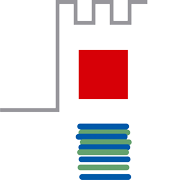The rooms in this part of the castle are furnished in a much simpler way since they were mostly used as guest bedrooms. The items that they contain are displayed according to stylistic periods, ranging from Baroque to Neo-Renaissance.
The Baroque Room
The room is furnished in the style of German Baroque. A cabinet, a bed, wardrobes and trunks all date back to the 17th century, while the chairs were modeled in French style. The tables are interesting as well: one of them is demountable with the year 1748 inlaid into the surface, while the other is a card table. The focal point of the room is an elaborately painted oval mirror and a chandelier from the 18th century. A wooden head by the bed was used as a stand for wigs popular at the time.
The Rococo Room
The room is divided into two parts: a study occupies the left and the sleeping part the right side of the room. All the furniture dates from the second half of the 18th century. The study contains two carved and finely decorated secretaries desks. The sleeping part is furnished with beds, nightstands, a vanity table, two wall scones and a table candleholder as well as a table clock. The walls display family portraits in oval frames painted in the first half of the 18th century.
The Room with Hand painted Wallpapers
Hand painted wallpapers in this room feature troops under command of Josip Kazimir Drašković, a banderij numbering 821 soldiers that took part in the Seven Year’s war (1756-1763). Soldiers uniforms, equipment and flags as well as the formation of individual units and their parts are all faithfully represented. Of special interest is the painting of the Count’s professional military band, which is the first artistic representation of military music in Croatia.
The Room with Portraits of Officers
This room is thematically linked with the previous room. On display are portraits of the officers in Drašković’s army as well as two flags: the smaller- a swallowtail belonged to cavalry, and the larger one with the imperial coat of arms, was an infantry flag.
The Classicist Room
The room is fitted out with furniture bearing stylistic features of Classicism (the turn of the 19th century): a richly decorated inlaid table, chairs, a settee, a chest of drawers and a wardrobe. These are supplemented with two candleholders from Napoleonic era. Portraits on the wall show the most distinguished members of Drašković family from that time.
The Biedermeier Room
The room is comfortably and functionally furnished in the way that resembles modern day furniture: two three seater sofas, upholstered with striped fabric of lighter shades, two chests of drawers, a longcase clock and a mirror in a gilded frame. The division wall displays a lithography featuring Austrian imperial and royal family beside the portrait of the deceased emperor Francis I.
The Neo-Renaissance Room
Neo-Renaissance, a form of Historicism, appeared in the second half of the 19th century. All the furniture in the room is painted black: a sideboard cabinet, a round table, chairs and two mirrors. The room contains the oldest furniture item in the museum- an original Renaissance cabinet with drawers. The room is decorated with one of the most beautiful portraits in the castle- the portrait of Klotilda Kulmer Drašković, the wife of Franjo II Drašković of Klenovnik, a brother of Juraj VI, the rebuilder of Trakošćan.
The Painting Gallery
It consists of two rooms. The smaller gallery contains the portraits of Drašković children, made from the end of the 16th century to the middle of the 18th century. They make a valuable and unique collection in northwestern Croatia. The focal point of the larger room are four paintings done by a famous Biedermeier painter Mihael Story, from the cyclus called “Four Continents”. Asia, Africa, Europe and America are personified in women featured in the interior and exterior settings. Each of them represents elements typical of individual continents.
